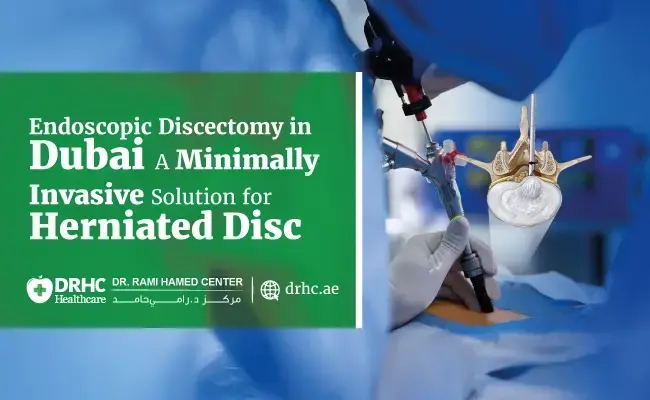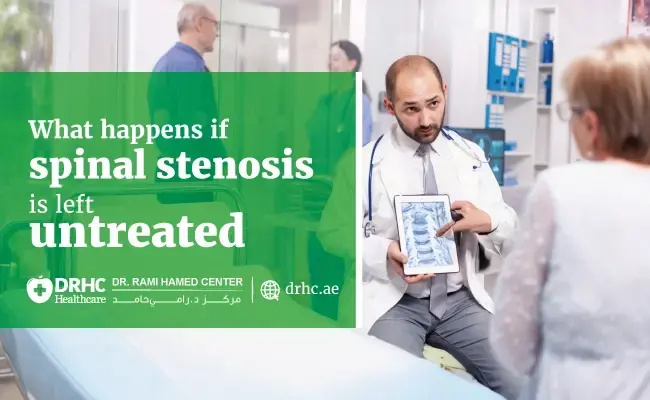
Knee pain can be frustrating—especially when it interferes with your ability to walk, bend, or enjoy your daily routine. If you're experiencing a clicking, locking, or sharp pain in the knee, you may be dealing with a meniscus tear, one of the most common knee injuries.
At Dr. Rami Hamed Center (DRHC) in Dubai, we often see patients who are unsure about what a meniscus tear means and how serious it might be. The good news is that with timely diagnosis and the right treatment plan, many people recover well and return to their normal activities—often without the need for major surgery.
Understanding the Meniscus: A Key Part of Your Knee
Your meniscus is a crescent-shaped piece of cartilage that acts as a cushion between your thighbone (femur) and shinbone (tibia). Each knee has two menisci—one on the inside (medial) and one on the outside (lateral). These cartilages help stabilize your knee joint and absorb shock during activities like walking, running, or squatting.
What Causes a Meniscus Tear?
Meniscus tears can happen to anyone, from athletes to older adults. The cause often depends on your age and activity level.
Common causes include:
- Twisting injuries during sports or sudden movement
- Deep squatting or kneeling
- Lifting heavy objects with improper form
- Age-related degeneration, where the cartilage weakens over time
Even something as simple as standing up from a low chair the wrong way can cause a tear if the meniscus is already fragile.
Signs and Symptoms of a Meniscus Tear
A meniscus tear doesn’t always cause pain right away. Some people feel a “pop” in the knee during the injury, followed by gradual swelling and discomfort over the next 24–48 hours.
You may experience:
- Sharp or aching pain, especially when twisting or squatting
- Swelling or stiffness in the knee
- A sensation that the knee is catching, locking, or giving way
- Limited range of motion or difficulty straightening the knee
If these symptoms persist or worsen, it’s important to have your knee evaluated by a specialist.
How Is a Meniscus Tear Diagnosed?
At DRHC Dubai, your evaluation begins with a detailed medical history and physical exam. Your doctor may gently move your leg in certain directions to check for signs of a tear. Imaging tests such as an MRI scan are often used to confirm the diagnosis and determine the size and location of the tear.
Treatment Options for a Meniscus Tear
The best treatment depends on several factors, including your age, activity level, and the type and severity of the tear.
Non-Surgical Options:
- Rest, Ice, Compression, and Elevation (RICE)
- Anti-inflammatory medications to reduce swelling and pain
- Physical therapy to strengthen muscles around the knee
- Knee braces or supports to stabilize the joint
Many small tears—especially in the outer edge of the meniscus, which has better blood supply—can heal on their own with conservative care.
Surgical Treatment:
If the tear is large, causes persistent symptoms, or affects mobility, arthroscopic surgery may be recommended. This is a minimally invasive procedure where a small camera and surgical tools are used to either repair or trim the torn meniscus.
At DRHC’s orthopedic daycare surgery unit in Dubai, arthroscopy is performed safely and efficiently, often allowing patients to go home the same day.
Our Related Blogs:
- Can't Straighten Your Knee? A Torn ACL or Meniscus Could Be the Reason
- Sharp Knee Pain When Walking? Loose Cartilage Might Be the Cause
- Grinding Sensation in Your Knee? Cartilage Damage May Need Arthroscopy
- Painful Kneecap? Patellar Misalignment Can Be Treated with Arthroscopy
- Chronic Knee Pain Despite Rest? Arthroscopy Can Diagnose & Treat the issue
- Stiff Knee After Injury? Scar Tissue Might Require Arthroscopic Cleanup
- Can't Squat Without Pain? Meniscus Tears Often Respond Well to Arthroscopy
Frequently Asked Questions
Is a meniscus tear serious?
Not all meniscus tears are severe, but they can become worse over time if left untreated—especially if you continue high-impact activities.
Will I need surgery?
Not always. Many people recover fully with physical therapy and rest. Surgery is considered if symptoms persist or interfere with your lifestyle.
How long does recovery take?
For non-surgical cases, recovery may take a few weeks. After arthroscopy, most people return to normal activity within 4 to 6 weeks, with guided rehabilitation support.
Is the surgery painful?
The procedure itself is painless under anesthesia. Postoperative discomfort is usually mild and controlled with medication. Most patients experience noticeable improvement within a few days.
When to Seek Help
If knee pain is limiting your ability to move, exercise, or perform daily tasks, it’s time to speak with a specialist. Early diagnosis can prevent further damage and help you recover faster.
At Dr. Rami Hamed Center (DRHC) in Dubai, our orthopedic specialists are experienced in evaluating and treating all types of knee injuries, including meniscus tears. Whether you need a simple care plan or a minimally invasive procedure, we’re here to support your recovery every step of the way.
Call +97142798200 us now to schedule your consultation today!
Visit our Spine Center at DRHC Dubai – Located in Dubai Healthcare City
Topic: orthopedic Knee




.jpg)




Leave a comment